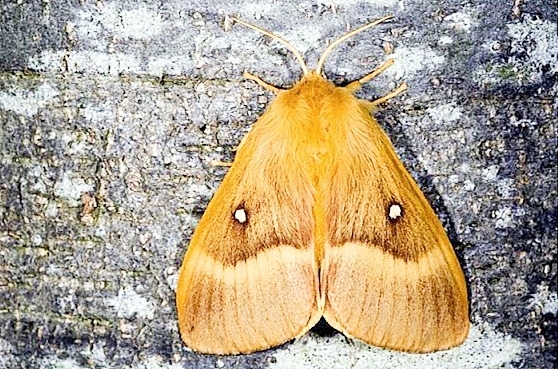ERROR : Server Busy(-1105)
ERROR : Server Busy(-1105)
Oak eggar (Lasiocampa quercus)
Male oak eggars can sometimes be seen flying by day. They're particularly noticeable because of their large size. The females tend to fly at night, and are sometimes attracted to light.
Oak eggar moths have chestnut brown wings with a flared yellow line running through them, and a white dot on each forewing.
The caterpillars are covered in brown coloured hairs. Between each body segment is a black line. There are also small tufts of white fur along the sides on each segment. |

